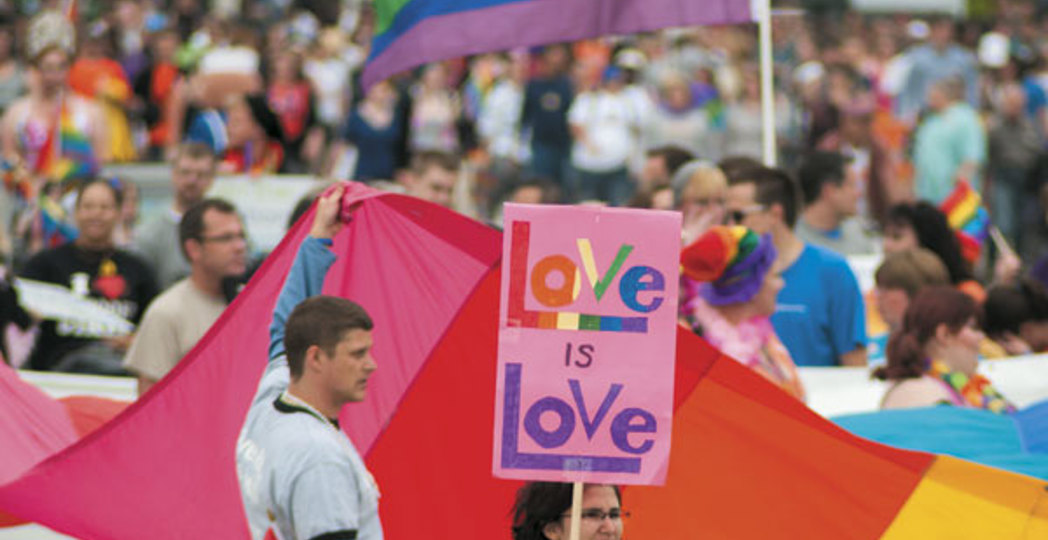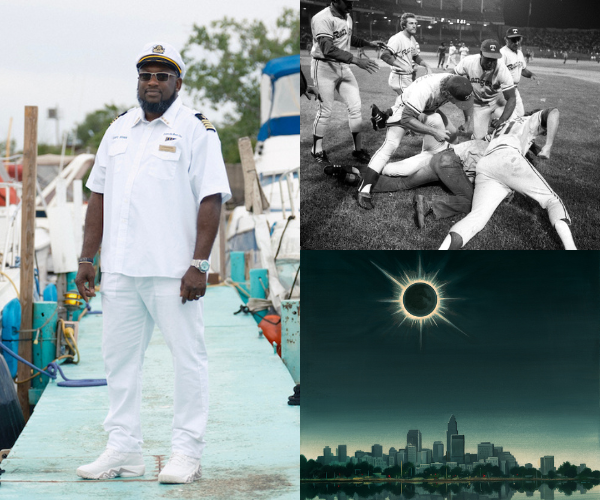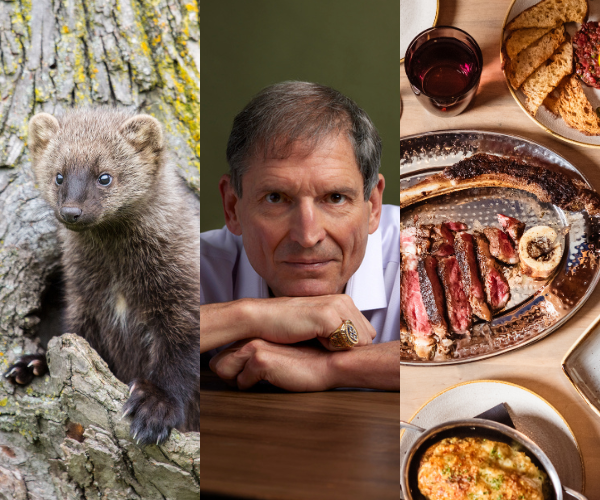With Pride
by Ken Schneck | May. 8, 2018 | 4:00 PM

Bob Perkoski
Cue Sophia Petrillo’s Golden Girls voice. Picture it: February, 1979. Ten years after the Stonewall Riots in New York City.
On the West Coast, gay pioneer Harvey Milk has just been assassinated. Down in Florida, Anita Bryant, famed anti-gay activist and pageant winner, still reigns as a brand ambassador for the Florida Citrus Commission. In Philadelphia, plans are underway for a National March on Washington for Lesbian and Gay Rights.
Throughout the country, LGBTQ ordinances are being passed and repealed as the nation wrestles with the rights of people whose very identity had been classified as a mental disorder only a few years earlier. And somewhere in the middle sits Cleveland.
That month, Robert L. McQueen, editor of the national LGBT newspaper The Advocate, came here to promote our fair city to a wider gay audience in a piece headlined, “Cleveland: The Contrasts, Closets and Couples.” What was supposed to be a flattering profile turned into something distinctly less so.
“Much like the city itself, Cleveland’s gay community also appears divided geographically, socially, and politically, as well as by gender — separatism remains a strong political ideal, I am informed by several lesbians — by degree of openness and participation within the community and its organizations, and by attitudes toward the city,” McQueen wrote. “There are those who love Cleveland and those who would love to leave it. Defenders defend it with the same intensity as detractors damn it.”
When I stumbled on this article while researching my new book on local LGBTQ history, LGBTQ Cleveland, I felt immediately insulted. Heck, I only moved to Cleveland four years ago, but those words simply did not ring true to my lived — albeit brief — experience.
During this time, the iconic Terminal Tower lit up the skyline in rainbow colors. An arena full of thousands of people cheered at the opening ceremonies of the 2014 Gay Games. Throngs marched and danced together at Pride. When those images spring to mind, I immediately think, “#ThisIs(Gay)CLE.”
Seeking validation, I turned to a few longer-serving Cleveland gays to elicit their outrage over McQueen’s characterization. Yet, they offered little indignation. What I received sounded more like, “Yup!” “Sounds about right!” and “Yeah, that’s us!” Somehow these 40-year-old words describing a divided gay Cleveland not only resonated with them, but affirmed their own experiences.
Actor and advocate Darius Stubbs was the most frank. “I don’t know that Cleveland has an LGBT community,” he says. “I mean, we have pockets of people who live in certain geographical areas who identify somewhere on the gender and sexuality spectrums, but that’s kinda it. The LGBTQ community here is so quick to self-segregate along race, socioeconomic and political lines, but won’t unify on them.”
I was honestly pretty darn disappointed. Then a bit annoyed. I couldn’t help but rebel against the idea of a rainbow city divided. I want to feel a sense of LGBTQ community. I always have.
For my first 18 years, I was a tennis-playing, J. Crew-wearing, yearbook-editing guy who sat with girls during lunch in northern New Jersey football country. Although I never expressed any same-sex attraction toward anyone in my youth, I was the smiling face for the “Holy Hell, You’re Gay!” poster that might as well have hung on my locker.
I was bullied mercilessly for something I had never reconciled for myself, much less remotely intimated or said out loud.
When I moved to New York City for college, I quickly found my gay klatch. (I’m not sure if you’ve heard this, but a ton of gay people live in New York City.) I came out to my parents in 1997. Their first reaction was to put some distance between us. I felt abandoned and never needed a gay community more. My New York friends were my family of association, if not my family of blood.
After that I lived in Vermont for six years, a gay mecca of Subarus and NPR listeners. Moving to Cleveland in 2013 was a step back for my civil rights. I now live in a state that guarantees no protections in employment, housing or public accommodations.
“The Cleveland LGBTQ+ community is diverse, robust and we are consistently fighting to make ourselves seen and heard within a state and federal system that would often times much rather serve to silence and further marginalize us than to create access and equity,” says nonprofit champion and activist Evie “DuVi” DuVernay.
In that context, my yearning for a sense of LGBTQ community has never felt stronger. I thought I felt that family feeling. But some of my friends were telling me it didn’t exist.
“Community creates the feeling of fellowship or belonging and takes us to a place of transformation,” says longtime resident Judy Benson. “This cannot happen with a small circle of friends or family. How can community happen if we do not open up and participate?”
But I have seen the Cleveland LGBTQ community come together. History shows that when we gather under one rainbow we can march, we can celebrate, we can create change and we can be heard. When faced with historic rifts and a demoralizing present, it is easy to forget. But we must remember.
When the first LGBT Community Center was driven out by arson in 1978, barred from operating by local ordinances and weathered the occasional bomb threat in the early 1980s, the Cleveland LGBTQ community persevered. Over the past 40 years, the center moved around a half dozen times until breaking ground in December 2017 in the Gordon Square Arts District. The property is the first the center will own outright.
When the owner of U4IA, a gay bar on Berea Road, tried to kick out lesbians in 1988 under the pretense of a “dress code,” the Cleveland LGBTQ community protested to successfully restore social inclusion.
In 2003, Cleveland Heights became the first municipality in the country to pass a domestic partner registry by voter initiative, despite a city council member who sued unsuccessfully to invalidate it.
When a drunk driver plowed into the crowd at the Dancing in the Streets festival in 2013, killing one and injuring four others, the LGBTQ community grieved together and resolved not to forget a legendary event that raised funds for local HIV/AIDS services.
Even recently, when the Cleveland LGBTQ community was ambushed with a vague press release in 2016 saying a “changing social climate” had effectively canceled our city’s only Pride celebration, the community quickly coalesced in only three weeks to create both a new event and a new legacy.
Now, in my early 40s, my need for community has not waned. Heck, with a president who seems hellbent on rolling back scant LGBTQ protections, my need for affiliation feels as strong as when I was a 20-year-old in New York. I want that elusive sense that my family of choice is out there. I want a group that will surround me when I am struggling and around whom I can circle.
The LGBTQ divisions chronicled by The Advocate in 1979 have not disappeared. We still have so much work to do.
But we should also recognize that we are living a version of the LGBTQ community I have long sought. We are more than bricks and mortar. We are more than streamers and balloons. And we must continue to build.
Trending
-
1
-
2
-
3
-
4
-
5










